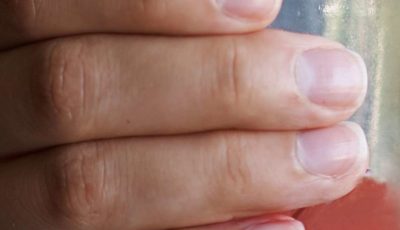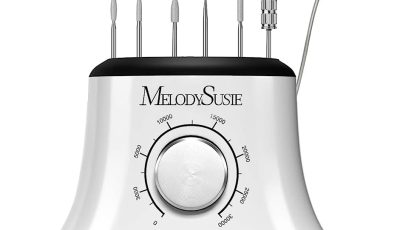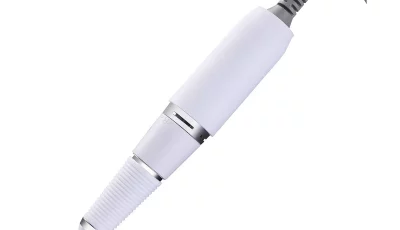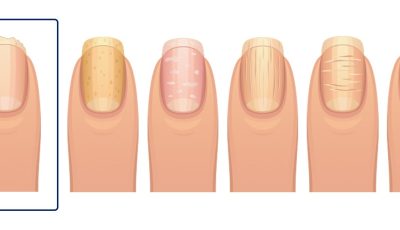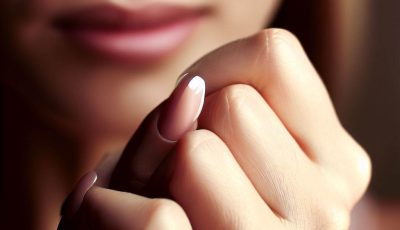Today, we will discuss the role of hydration in nail health. You’ll learn how keeping your nails hydrated can prevent common problems like brittleness, dryness, and peeling. We’ll also explore the best ways to hydrate your nails, including how to choose the right moisturizers and the importance of drinking enough water. By the end, you’ll have a better understanding of how hydration can improve the overall health and appearance of your nails.
Introduction
Taking care of your nails is not just about applying nail polish and getting manicures. It’s also important to prioritize nail health from within. One of the most crucial aspects of nail health is hydration. Keeping your nails hydrated is not only beneficial for their appearance but also for their overall strength and flexibility. In this article, we will delve into the significance of hydration for nail health and explore how proper hydration can enhance the appearance and strength of your nails.
Hydration and Overall Health
Before we dive into the specific benefits of hydration for nails, it’s essential to understand the connection between hydration and overall health. Our bodies are composed of approximately 60% water, and maintaining proper hydration levels is crucial for our overall well-being. Water plays a vital role in various bodily functions, including regulating body temperature, lubricating joints, aiding digestion, and transporting nutrients.
When it comes to nail health, staying hydrated is equally important. Hydration ensures that your nails receive an adequate supply of nutrients necessary for their growth and strength. Moreover, adequate hydration promotes the elimination of toxins, preventing nail-related issues such as discoloration and brittleness.
Effects of Dehydration on Nails
Dehydration occurs when your body loses more fluids than it takes in. This imbalance can have detrimental effects on your nail health. When your body is dehydrated, it compensates by redirecting water to vital organs, leaving your nails and other non-essential tissues deprived of moisture. As a result, your nails become weak, brittle, and prone to breakage.
Additionally, dehydration can lead to dry cuticles, which are essential for protecting the nail bed and promoting healthy nail growth. Dry cuticles can become painful and may even cause hangnails, which can further damage the nails. Therefore, maintaining proper hydration levels is crucial to prevent these issues and promote optimal nail health.
Nail Structure and Composition
To understand the role of hydration in nail health, it’s important to familiarize yourself with the anatomy and composition of the nails. Nails are made up of several layers of keratin, a protein that provides strength and durability. The nail plate, the visible part of the nail, is composed of dead keratin cells.
Beneath the nail plate lies the nail bed, which is rich in blood vessels and nerve endings. The nail bed is responsible for nourishing the nails and promoting their growth. Proper hydration ensures that the nail bed receives an adequate supply of water, which in turn supports healthy nail growth and strength.
Significance of Keratin
Keratin is a fibrous protein that plays a vital role in maintaining the structure and strength of nails. It acts as a protective barrier, shielding the nails from external factors that can cause damage. Without adequate hydration, the natural moisture balance of the nails is disrupted, leading to dryness and brittleness.
Keratin relies on water molecules to maintain its flexibility and prevent the nails from becoming too rigid or too flimsy. When nails lack hydration, they become more prone to breaking, splitting, and peeling. By keeping your nails properly hydrated, you provide the necessary moisture for keratin to maintain its integrity, resulting in stronger, healthier nails.
Hydration and Nail Growth
Nail growth is influenced by various factors, including genetics, age, and overall health. While hydration alone may not significantly impact the speed of nail growth, it plays a crucial role in promoting healthy and strong nail growth.
When your body is adequately hydrated, it ensures that the nails receive a consistent supply of essential nutrients and oxygen. This nourishment supports the production of new cells in the nail matrix, or the area where new nail cells are formed. As a result, your nails grow stronger, longer, and less prone to breakage.
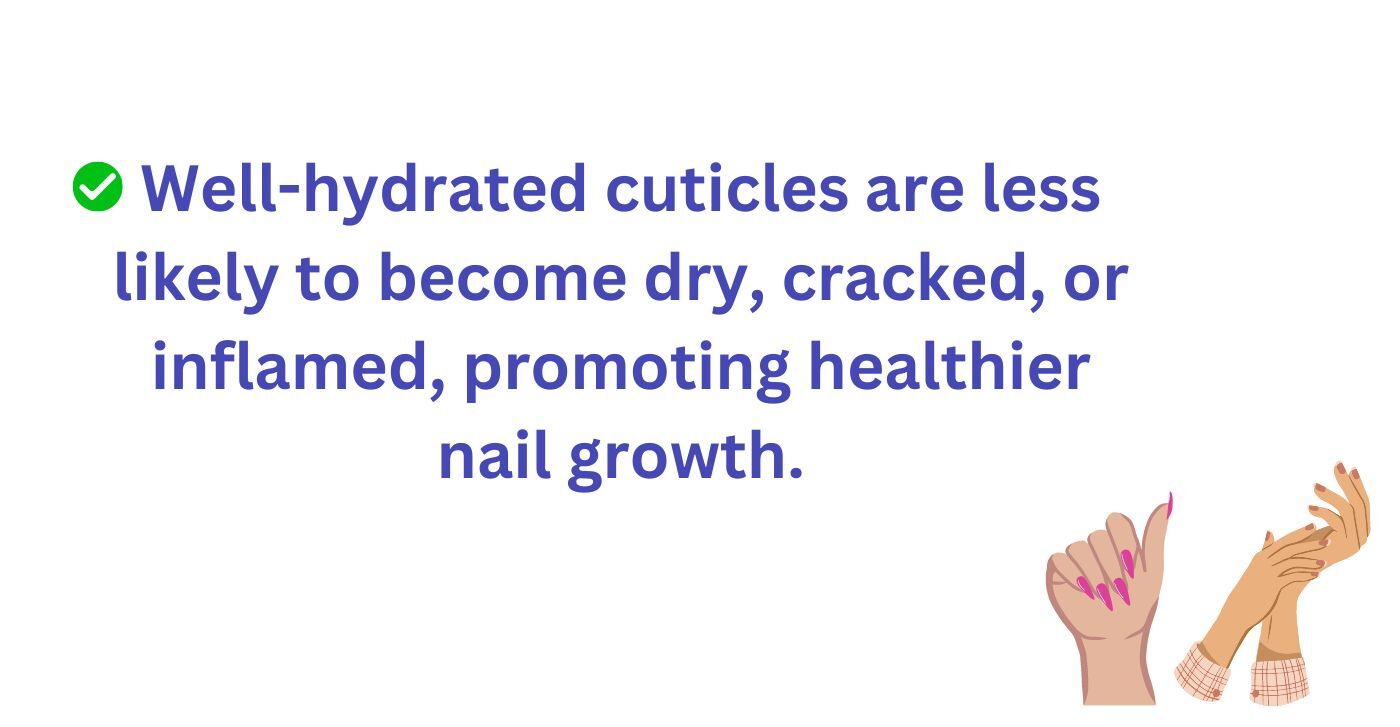
Promoting Healthy Nail Growth Through Hydration
To promote healthy nail growth through hydration, it’s important to incorporate some simple habits into your daily routine. Start by drinking an adequate amount of water every day. The general recommendation is to drink at least eight glasses of water, but individual needs may vary depending on factors such as physical activity level and climate. Staying hydrated from within will benefit not only your nails but also your overall health.
In addition to consuming enough water, external hydration is also crucial. Apply a hydrating nail oil or moisturizer to your nails and cuticles regularly. Look for products that contain nourishing ingredients such as vitamin E and jojoba oil, as they can help retain moisture and promote healthy nail growth. Massaging these products into your nails and cuticles not only moisturizes them but also helps improve blood circulation to the area, enhancing nutrient delivery.
Moisturizing and Nail Health
In addition to keeping your nails hydrated, it’s equally important to prioritize moisturizing them. While hydration primarily focuses on providing water to the nails, moisturization involves locking in that moisture and preventing its evaporation.
Regular moisturizing is especially important for individuals with naturally dry nails or those who frequently expose their hands to harsh environmental factors, such as frequent handwashing or extended exposure to water. Dry nails are more vulnerable to breakage and other issues, making moisturization a crucial aspect of maintaining their health and strength.
Choosing the Right Moisturizer
When it comes to choosing a moisturizer for your nails, opt for products that are specifically formulated for this purpose. Look for moisturizers that are free of harsh chemicals and contain ingredients known for their hydrating and nourishing properties. For example, shea butter, almond oil, and cocoa butter are popular choices due to their high moisture-retaining capabilities.
It’s also important to consider the texture of the moisturizer. A lightweight moisturizer that absorbs quickly will ensure that your nails don’t feel greasy or weighed down. Additionally, if you prefer using natural or organic products, look for options that are free of synthetic fragrances and dyes.
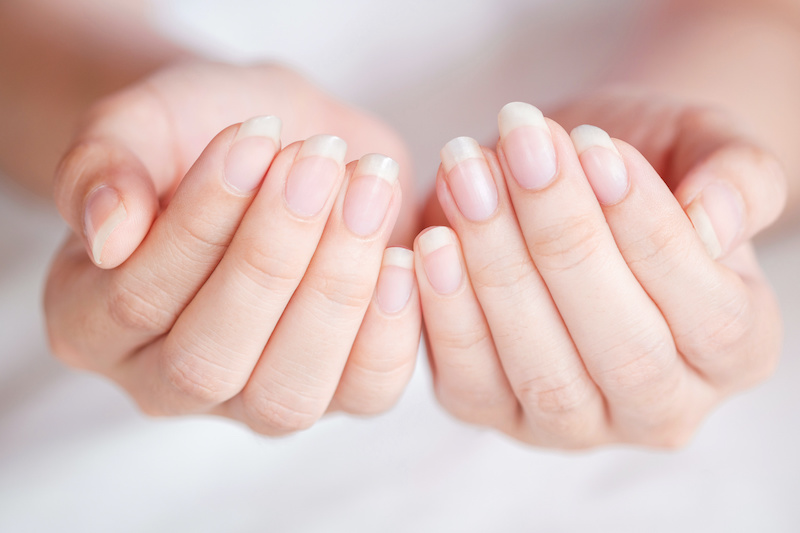
Techniques for Effective Nail Moisturization
Applying moisturizer to your nails and cuticles is a simple process that can be incorporated into your daily routine. Start by washing your hands with a gentle cleanser to remove any dirt or impurities. Gently pat your hands dry with a soft towel, leaving some moisture on your nails and cuticles.
Next, apply a small amount of moisturizer to each nail, working it into both the nail plate and surrounding cuticles. Use gentle circular motions to massage the moisturizer, ensuring it is evenly distributed. Pay extra attention to your cuticles, as they are prone to dryness and hangnails.
For enhanced absorption and moisture retention, consider wearing cotton gloves or using fingertip gloves after applying moisturizer. This will create a seal, allowing the moisturizer to penetrate deeper into the nails and cuticles. Leave the gloves on for at least 15 minutes or overnight for maximum benefits.
Hydration and Nail Strength
Weak, brittle nails are a common issue faced by many individuals. Lack of hydration is often a contributing factor to this problem. By prioritizing hydration, you can strengthen your nails from within, making them less vulnerable to breakage and damage.
Hydration acts as a foundation for strong nails by providing the necessary moisture and nutrients to maintain their integrity. When your nails are properly hydrated, they become more resilient and flexible, reducing the likelihood of breakage. Additionally, well-hydrated nails are less likely to develop ridges, which can affect their overall strength and appearance.
Preventing Nail Breakage Through Hydration
To prevent nail breakage through hydration, it’s important to keep your nails moisturized and minimize exposure to excessive moisture. While hydration is crucial, extended exposure to water, especially hot water, can lead to weakened nails.
Consider wearing gloves while performing tasks that involve soaking your hands in water, such as washing dishes or cleaning. This protective barrier will minimize the direct contact of water with your nails and help maintain their strength. Additionally, during colder months or in dry climates, wearing gloves outdoors can prevent moisture loss from your nails, preserving their hydration levels.

Hydration and Nail Flexibility
Nail flexibility is another aspect of nail health that depends on proper hydration. Flexible nails are less prone to breakage and have a better chance of withstanding impact. Water plays a significant role in maintaining the flexibility of your nails, helping them bend and absorb stress without cracking or breaking.
When your nails lack hydration, they become dry, rigid, and more susceptible to damage. This rigidity can lead to nail breakage or the formation of unsightly vertical splits. By ensuring your nails are adequately hydrated, you increase their flexibility, making them less prone to such issues.
The Role of Water in Maintaining Nail Flexibility
Water acts as a lubricant within the nail structure, allowing the keratin cells to glide against each other without friction. This lubrication enhances the flexibility of the nails, ensuring they can adapt to different movements and pressures without compromising their structure or strength.
When your nails are dehydrated, the lack of water between the keratin cells can cause them to stick together. Instead of smoothly gliding against each other, the cells become rigid and more likely to break or split. By maintaining proper hydration levels, you provide the necessary lubrication for the cells, promoting nail flexibility and minimizing the risk of damage.
Hydrating Methods to Enhance Nail Flexibility
To enhance the flexibility of your nails through hydration, there are several effective methods you can incorporate into your nail care routine. One simple approach is to soak your nails in warm water for a few minutes every day. This gentle hydration will help soften the keratin cells and increase their flexibility.
Adding a few drops of hydrating oils, such as olive oil or argan oil, to the warm water can further enhance the moisturizing benefits. These oils contain essential fatty acids that penetrate the nail plate, providing deep hydration and nourishment.
In addition to daily soaking, consider using a hydrating nail serum or cream specifically formulated to improve nail flexibility. These products often contain ingredients such as hyaluronic acid or collagen, known for their moisture-retaining properties. Apply the serum or cream to your nails and massage it gently for better absorption.
Hydration and Cuticle Health
While we often focus on the appearance and health of the nails themselves, it’s important not to neglect the well-being of the cuticles. Cuticles play a crucial role in protecting the nail bed from infection and promoting healthy nail growth. Adequate hydration is key to maintaining their health and functionality.
Understanding the Importance of Cuticles
Cuticles are the thin layer of skin that forms a protective seal at the base of your nails. They act as a barrier, preventing bacteria and fungi from entering the nail bed and causing infections. Additionally, cuticles help retain moisture, preventing water loss from the nails and maintaining their hydration levels.
Improper care and lack of hydration can lead to dry, cracked cuticles, which may peel or become inflamed. These issues can make your nails more susceptible to infection and hinder healthy growth. By prioritizing hydration, you can keep your cuticles well-nourished and maintain their protective function.
Impact of Hydration on Cuticle Health
Proper hydration plays a significant role in maintaining the health and appearance of your cuticles. When your body is adequately hydrated, the moisture is distributed to all areas, including the cuticles. This hydration prevents the cuticles from becoming dry and brittle, reducing the risk of hangnails and other cuticle-related issues.
In addition to providing external hydration, staying hydrated internally by drinking enough water is essential for cuticle health. The water you consume reaches all parts of your body, including the cuticles, ensuring they receive the necessary moisture to maintain their integrity.
Hydrating Cuticles for Overall Nail Health
To keep your cuticles hydrated and in optimal condition, there are a few simple techniques you can incorporate into your nail care routine. One effective method is to use cuticle oil regularly. Cuticle oils are specifically formulated to penetrate the skin and nails, providing deep hydration while nourishing the cuticles.
Apply a small amount of cuticle oil to each nail and gently massage it into the cuticle area. The massage not only enhances absorption but also helps improve blood circulation to the area, promoting healthy nail growth. For optimal results, use the cuticle oil daily or as needed, paying extra attention to any dry or damaged areas.
Remember to moisturize your cuticles after washing your hands or exposing them to water for an extended period. This will help replenish any lost moisture and prevent the cuticles from becoming dry and brittle.
Hydration and Nail Appearance
Proper hydration is not just beneficial for the health and strength of your nails; it also plays a crucial role in their appearance. Dry, dehydrated nails often appear dull, discolored, and lackluster. By maintaining optimal hydration levels, you can achieve polished, healthy-looking nails.
Dryness and the Effect on Nail Appearance
Dry nails often appear visibly dull and lack the natural shine associated with healthy nails. The lack of moisture can cause the nail plate to become rough and uneven, making it difficult for nail polish to adhere smoothly. Additionally, dry nails are more prone to ridges and bumps, compromising the overall appearance of your manicure.
When your nails lack hydration, they are also more susceptible to discoloration. Dryness can lead to yellowing or staining of the nails, making them appear unhealthy and unkempt. By ensuring your nails remain properly hydrated, you can prevent these issues and maintain a polished appearance.
Role of Hydration in Achieving Polished Nails
Hydration is key to achieving polished nails that look healthy and well-maintained. When your nails are adequately hydrated, the natural moisture balance is restored, resulting in smoother, shinier nails. Proper hydration also helps nourish the nail bed, promoting the growth of healthy, vibrant nails.
By maintaining hydration, you create an ideal canvas for your nail polish application. Hydrated nails allow nail polish to adhere more easily and evenly, resulting in a flawless and long-lasting manicure. Whether you prefer bold colors or a classic French manicure, hydrated nails will enhance the overall appearance and durability of your chosen nail polish.
Maintaining a Hydrated Nail Surface
To maintain a hydrated nail surface, it’s important to incorporate certain practices into your nail care routine. Start by avoiding excessive exposure to water and harsh chemicals. Prolonged contact with water, such as frequent handwashing or soaking your nails in hot water, can strip the nails of their natural oils, leading to dryness and dehydration.
Use gloves when performing household chores or tasks that involve prolonged exposure to water or chemicals. This protective barrier will help minimize the direct contact of water and chemicals with your nails, preserving their hydration levels. It’s also essential to choose gentle cleansers and nail products that are free of harsh chemicals, as these can further dehydrate the nails.
Additionally, make sure to moisturize your nails and cuticles regularly. Apply a hydrating nail oil or moisturizer after each manicure or handwashing to replenish any lost moisture. Massage the product into your nails and cuticles, ensuring it is evenly distributed. This will help maintain a hydrated nail surface and promote overall nail health.
Hydration and Nail Discoloration
Nail discoloration can be a concerning issue, as it affects the overall appearance of your nails. While there are several causes of nail discoloration, dehydration is often a contributing factor. By prioritizing hydration, you can prevent and potentially reverse nail discoloration, maintaining the natural color of your nails.
Causes of Nail Discoloration
Nail discoloration can occur due to various reasons, including fungal infections, trauma, prolonged use of dark nail polish, and certain medical conditions. However, dehydrated nails are also more susceptible to discoloration. When the nail plate lacks moisture, it can become stained or discolored, often turning yellow or developing white spots.
Preventing and Reversing Discoloration Through Hydration
Proper hydration is key to preventing and potentially reversing nail discoloration. By ensuring your nails remain adequately hydrated, you create a balanced environment that discourages discoloration-causing factors.
To prevent nail discoloration, incorporate the hydration techniques mentioned earlier in this article into your routine. Drink enough water, apply hydrating nail oil regularly, and moisturize your nails after washing your hands or exposing them to water. These practices will help keep your nails hydrated and less likely to develop discoloration.
If you notice existing discoloration, maintaining proper hydration may help reverse it in some cases. However, if the discoloration persists or worsens, it’s recommended to consult a dermatologist or healthcare professional for a proper diagnosis and treatment options.
Conclusion
In conclusion, hydration plays a vital role in maintaining optimal nail health. By prioritizing hydration and incorporating simple yet effective habits into your nail care routine, you can promote stronger, more flexible nails that are less prone to breakage and discoloration. Adequate hydration ensures that your nails receive the necessary nutrients and moisture to grow, remain healthy, and achieve a polished appearance.
Remember to drink plenty of water, apply hydrating nail oils or moisturizers regularly, and protect your nails from excessive exposure to water. By doing so, you’ll be taking essential steps towards maintaining a balance of moisture for optimal nail health. So, hydrate your nails from within, and watch them transform into stronger, healthier, and more beautiful nails!
